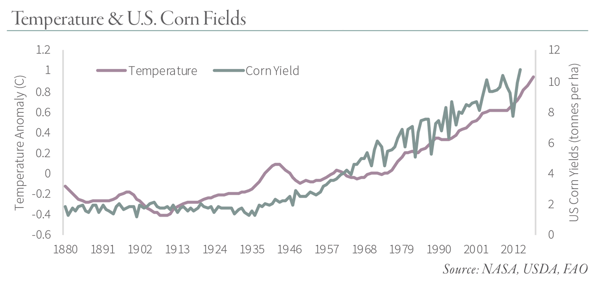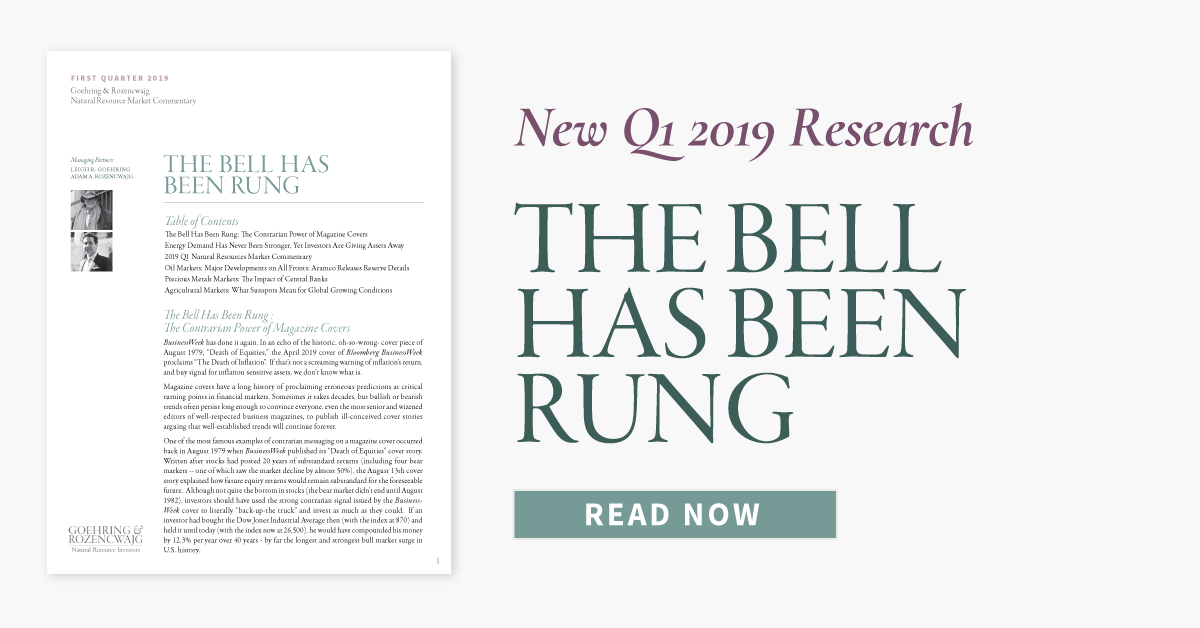“As the weather has become warmer and warmer over the last 70 years, the global grain harvest has become larger and larger.”
One of the great arguments put forth by a huge number of economists, prominent money managers, scientists, and politicians is that global warming will massively disrupt global weather patterns and negatively impact global agricultural growing conditions. Rising temperatures, extreme droughts, extensive flooding, and rising sea levels are all expected to result in long stretches of failed harvests, ultimately leading to higher food prices, increased scarcity and, in some instances, even global famine and severe societal stress. Some prognostications go so far as to predict widespread food shortages that could very well undermine the future of humankind. One must often resist the urge to crawl back into bed after reading the editorial and op-sections of The New York Times.
For all the talk of an impending global weather-related food apocalypse, a careful perusal of data over the last 70 years brings up a startling observation that almost no one has either noticed or chosen to point out. As the weather has become warmer and warmer over the last 70 years, the global grain harvest has become larger and larger. This trend has continued all the way up to the last five years, including last year’s harvest.
As you can see in the chart below, the last 80 years have enjoyed an incredible bull market in U.S. corn yields. After stagnating at around 25 bushels per acre for almost 70 years, corn yields (and grain yields, in general) began a steady and consistent surge that continues today. After bottoming in the Dust Bowl during the Great Depression, corn yields in the United States have now risen an impressive seven-fold. The generally-accepted explanations for the stupendous rise in yields are simple. The advancement of hybrid (and now genetically modified) seed genetics combined with large increases in fertilizer applications led to a global surge in grain production. This increase has allowed the world’s surging population to be fed at ever-lower prices. While the impact of seed genetics and increased fertilizer applications cannot be overstated, what if another factor was at work helping to push up grain yields over the last 70 years?
Although the relationship might be spurious, one cannot help but notice that the surge in U.S. corn yields began just as global temperatures began their 20th-century rise. Although it is impossible to disaggregate the impact of genetics, fertilizers, and weather on surging growing productivity, we want to at least put forward an idea that, while extremely controversial, might be an important variable in the surge in global yields. The consensus opinion is that global warming (a trend that you can clearly see in the chart above) will be extremely detrimental to the global growing conditions.
What if it turns out that one of the most important trends to positively affect global growing conditions over the last 70 years has actually been the rise in global temperatures? Perhaps the warming of the global climate has actually helped to produce the most advantageous crop growing conditions the world has seen since the Medieval Warming Period one thousand years ago (a period warm enough for the Vikings to carry out an extensive farming existence on Greenland and on the northern tip of Newfoundland).
While it may sound unorthodox, we would also like to point out that no one has even dared ponder what the effects of a global cooling period would have on crop conditions. If the warming of the past 70 years coincided with surging crop yields, could a period of cooling (however unexpected) have the opposite effect?
Next week, we will discuss two theories around this proposition. Please subscribe to our blog to make sure you don’t miss-out on any of our natural resource-related content.
This blog contains excerpts of our in-depth commentary, The Bell Has Been Rung. If you are interested in this subject, we encourage you to download the full commentary here.



